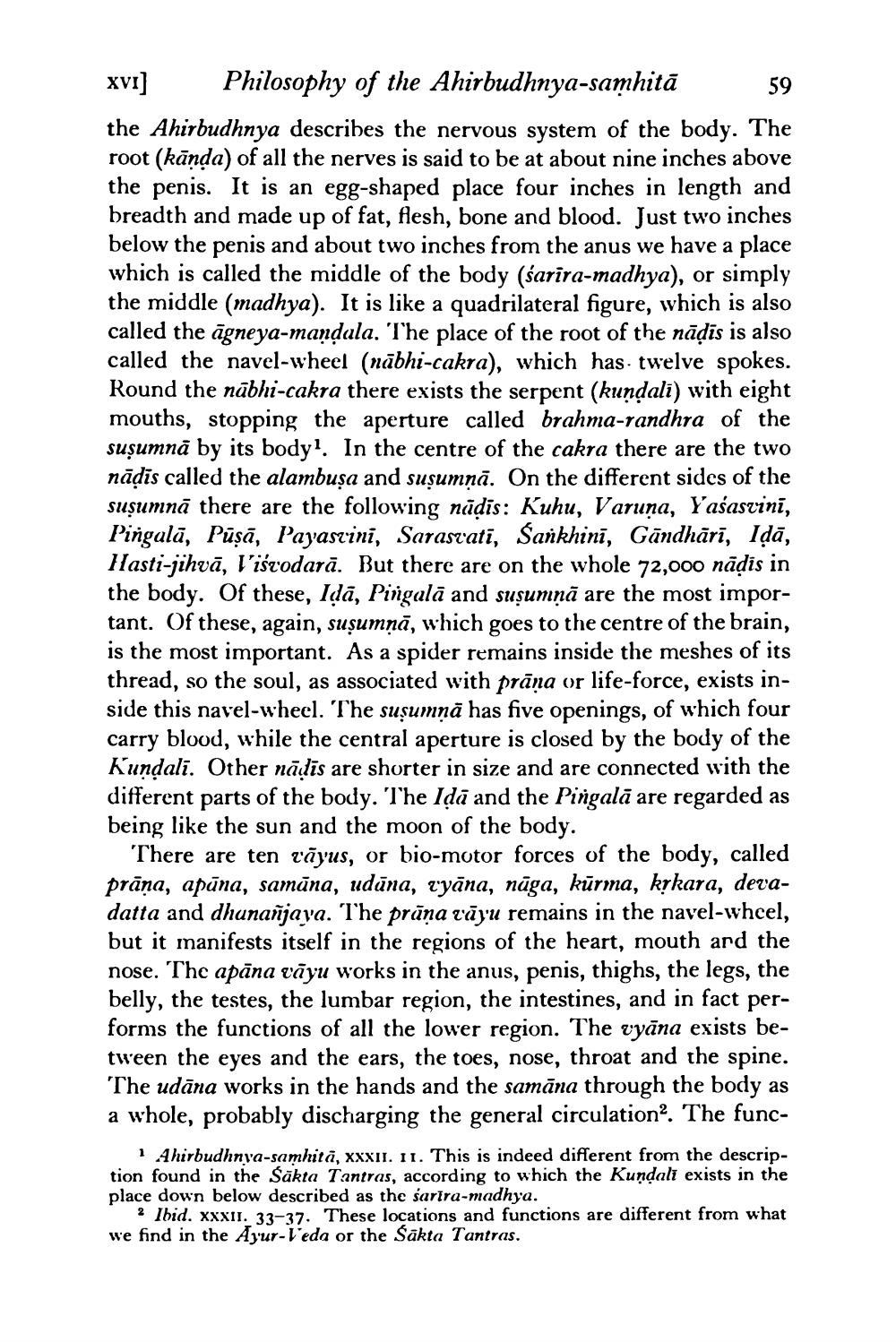________________
XV1] Philosophy of the Ahirbudhnya-samhitā 59 the Ahirbudhnya describes the nervous system of the body. The root (kānda) of all the nerves is said to be at about nine inches above the penis. It is an egg-shaped place four inches in length and breadth and made up of fat, flesh, bone and blood. Just two inches below the penis and about two inches from the anus we have a place which is called the middle of the body (sarira-madhya), or simply the middle (madhya). It is like a quadrilateral figure, which is also called the āgneya-mandala. The place of the root of the nādīs is also called the navel-wheel (nābhi-cakra), which has twelve spokes. Round the nābhi-cakra there exists the serpent (kundali) with eight mouths, stopping the aperture called brahma-randhra of the suşumnā by its body. In the centre of the cakra there are the two nādīs called the alambușa and suşumņā. On the different sides of the suşumnā there are the following nūdis: Kuhu, Varuna, Yašasvini, Pingalā, Pūsā, Payasrini, Sarasvati, Sankhinī, Gāndhārī, Iļā, Hasti-jihvā, l'istodarā. But there are on the whole 72,000 nādis in the body. Of these, Iļā, Pirigalā and suşumņā are the most important. Of these, again, susumnā, which goes to the centre of the brain, is the most important. As a spider remains inside the meshes of its thread, so the soul, as associated with prāņa or life-force, exists inside this navel-wheel. The suşumnā has five openings, of which four carry blood, while the central aperture is closed by the body of the Kundalī. Other nādīs are shorter in size and are connected with the different parts of the body. The Ida and the Pingalā are regarded as being like the sun and the moon of the body.
There are ten vāyus, or bio-motor forces of the body, called prāna, apāna, samāna, udāna, zyāna, nūga, kūrma, krkara, devadatta and dhunanjaya. The prūņa rāy'u remains in the navel-whcel, but it manifests itself in the regions of the heart, mouth ard the nose. The apāna vāyu works in the anus, penis, thighs, the legs, the belly, the testes, the lumbar region, the intestines, and in fact performs the functions of all the lower region. The vyāna exists between the eyes and the ears, the toes, nose, throat and the spine. The udāna works in the hands and the samāna through the body as a whole, probably discharging the general circulation?. The func
Ahirbudhnya-samhita, XXXII. 11. This is indeed different from the description found in the Sākta Tantras, according to which the Kundali exists in the place down below described as the sarira-madhya.
? Ibid. XXXII. 33–37. These locations and functions are different from what we find in the Ayur-V'eda or the Sākta Tantras.




